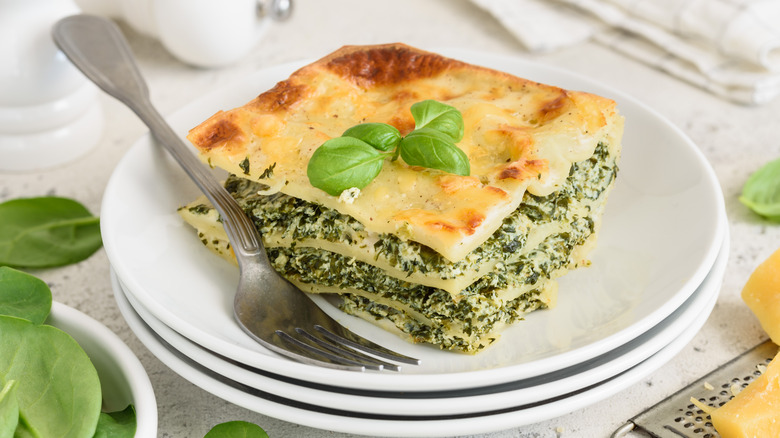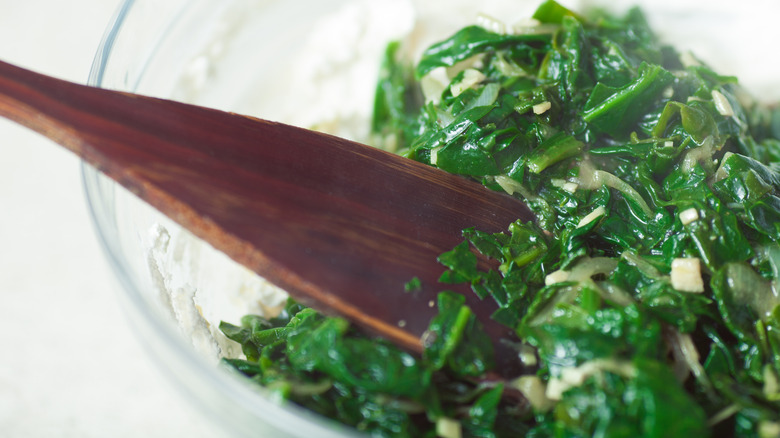Don't Skip This Cooking Step For Tastier Spinach Lasagna
Spinach and cheese are a natural pairing, if one that's underrated. Outside of the occasional spinach dip appetizer, people often stray from adding spinach to creamy dishes. And when spinach is added, it's tossed in by the handful at the very end, due to the fact that it wilts immediately.
Still, spinach has the potential to be something more flavorful and potent. Like spicy basil or earthy truffle, spinach can give a dish a depth of flavor that enhances its creaminess.
Such is the case with lasagna, the baked pasta dish with an infinite potential for additions and variations. Sometimes, lasagna is made of layers of red sauce and ricotta, while a more traditional lasagna is glued together with béchamel sauce, per The Washington Post. In both cases, adding spinach would be a way to make the creamy parts of a lasagna shine through the robust meat sauce. But as with a great spinach dip, or even homemade spinach ravioli, you can't just throw the spinach into your baking dish.
Sauté the spinach
In many cases, seasoned cooks swear by blanching vegetables to preserve their flavor, texture, and color. You essentially dip the vegetable in boiling water to get rid of its raw, bitter bite and shock it with cold water so that it doesn't become mush, according to Better Homes & Gardens. But in the case of spinach lasagna, you should avoid blanching. Feeling the bite of a blanched spinach leaf in between the layers of pasta and cream isn't as appealing as it sounds.
When adding spinach to dishes that depend on its fiber and texture, such as Korean japchae or bibimbap, blanching will bring out the vegetal aspect of the leaf without its natural bitterness. However, in the case of a creamed spinach dish, such as lasagna or spanakopita, wilting is preferred. By sautéing spinach, you accomplish two things: You bring out a more robust, toasty vegetable flavor and break down the plant fiber, per Sweetwater Organic.
The spinach should add dimension to the lasagna as if it were a kind of pesto, with an herbaceous yet earthy flavor complimenting the heavy cream. Furthermore, sautéing breaks down the spinach texture until it's hardly noticeable, so that it blends seamlessly with the ricotta or béchamel.

